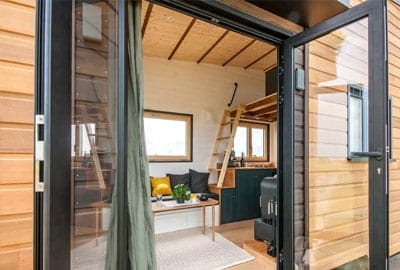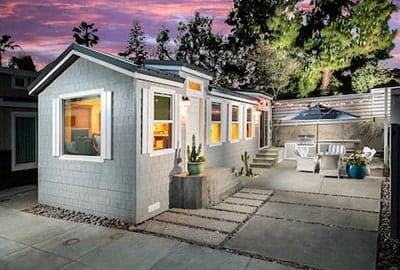





A link to download your FREE brochure will be in your inbox in 3 minutes



















The final price may vary based on project specifics.
To get a free accurate quote tailored to your needs, book a consultation with us today!

The price per square foot provided is an average and may vary depending on project-specific details such as materials, location, complexity, and other factors. Actual costs may differ from the average provided.
It is recommended to obtain a detailed quote based on the specific requirements of your project.

Please note that the monthly payment displayed on this page is an estimate and is subject to variation based on the selected loan product, applicants credit score, loan amount, and other financial details. Actual monthly payment may differ from the estimate provided.
It is recommended to seek advice from a financial advisor or loan officer to obtain precise payment information tailored to individual circumstances.
 Your Trusted
Local Contractor
Your Trusted
Local Contractor

The rise of the tiny house movement has captured global attention, with many transitioning to tiny living for myriad reasons, be it economic, environmental, or merely a quest for simplicity. But where are tiny homes most popular? Let's dive into the locales where tiny home living is not just a trend but a burgeoning lifestyle.
Modern tiny homes, a burgeoning phenomenon in today's architectural landscape, are compact living spaces meticulously designed to maximize every square foot. While many envision them as a snug primary residence nestled amidst the tranquility of surrounding mountains or perched near landmarks like the Sequoia National Park in Northern California, others see them as an urban oasis in big cities, including the bustling streets of Downtown Orlando or the Lone Star State's expansive terrains.
These homes aren't just about downsizing for the sake of aesthetics or a slower pace of life; they carry substantial economic benefits. Tiny homeowners often save money, avoiding the burdensome home improvement costs that traditional homes demand.
These diminutive dwellings, which sometimes measure less than the minimum square footage requirements set by zoning regulations, are also eco-conscious choices.
Adopting this lifestyle can significantly reduce one's carbon footprint, especially when compared to traditional homes' floor area. Beyond the house itself, many tiny home enthusiasts gravitate towards communities offering walking trails, fitness centers, tennis courts, and more. The Orlando Lakefront, for instance, a beacon in the Sunshine State, offers a haven of such amenities in close proximity. Such communities often ensure that building codes are met, and they cater to both homes on permanent foundations and those with the mobility of an RV.
The rise of the tiny house movement has nudged many zoning districts to rethink their zoning ordinances, paving the way for more of these eco-friendly, economical homes in both rural areas and the heart of big cities. Whether it's the allure of living a stone's throw away from the serene San Joaquin River, enjoying the beauty of the Golden State, or the desire to have free rein over one's own home design, the appeal of tiny living is undeniable and ever-growing.
Take a look at some of the best locations to aspire for tiny living!
And now look at the best countries that embrace tiny homes and the lifestyle concerned.
You are not alone with your tiny dwelling! Join the community of the like-minded people and broaden your horizons!
Here are the major ones to keep your eye on!
With the high costs of traditional homes, tiny houses allow individuals to save money and focus on other life priorities. The reduced floor area and square foot needs mean fewer home improvement costs and, often, more manageable property taxes.
With a smaller carbon footprint than traditional homes, tiny homes are a favorite among the eco-conscious. Their minimal square footage requirements mean less waste and fewer resources used in construction of homes in tiny house communities.
Many are drawn to the tiny home lifestyle because of its promise of simplicity. The freedom to design one’s own home, the tiny house community garden spaces often found in tiny home villages, and the slower pace of life in a small town all appeal to those looking for a break from the hustle and bustle of big cities.
Zoning Changes: As the popularity of tiny houses grows, many cities and countries are revising their zoning ordinances to accommodate the tiny house community. These modifications in zoning districts and local zoning regulations allow for increased flexibility in tiny house design and placement, further driving their popularity.

In conclusion, the tiny home movement has extended its roots globally, with various cities and countries becoming hotspots. From San Diego to the depths of the Golden State, the world is progressively adapting to the allure of living tiny. Whether it’s the economic advantages, the reduced carbon footprint, or the sheer joy of life within limited square feet, living in a tiny house community is more than a trend; it’s a revolution in redefining what “home” truly means.
Even though a tiny house requires a permanent foundation, just like a traditional home, and you can build it with the size of less than 400 square feet, just seven years ago the tiny home community was not as developed as it is now and it was more popular to create a primary dwelling on another lot.
Now, as you can see, the zoning ordinance and 400 square feet don't stop homeowners from building more and more tiny homes as they are definitely the future of the housing market.
Living tiny drastically reduces one's carbon footprint. With less square feet to heat, cool, or light up, energy consumption in a tiny home goes down.
This largely depends on local zoning laws and building codes. Some places have minimum square footage requirements, while others do not.
Amenities vary, but many tiny house villages boast community gardens, dog parks, walking trails, and even fitness centers.
While some tiny homes are built on permanent foundations, others are designed to be mobile, much like RVs, to give owners flexibility in choosing their location.